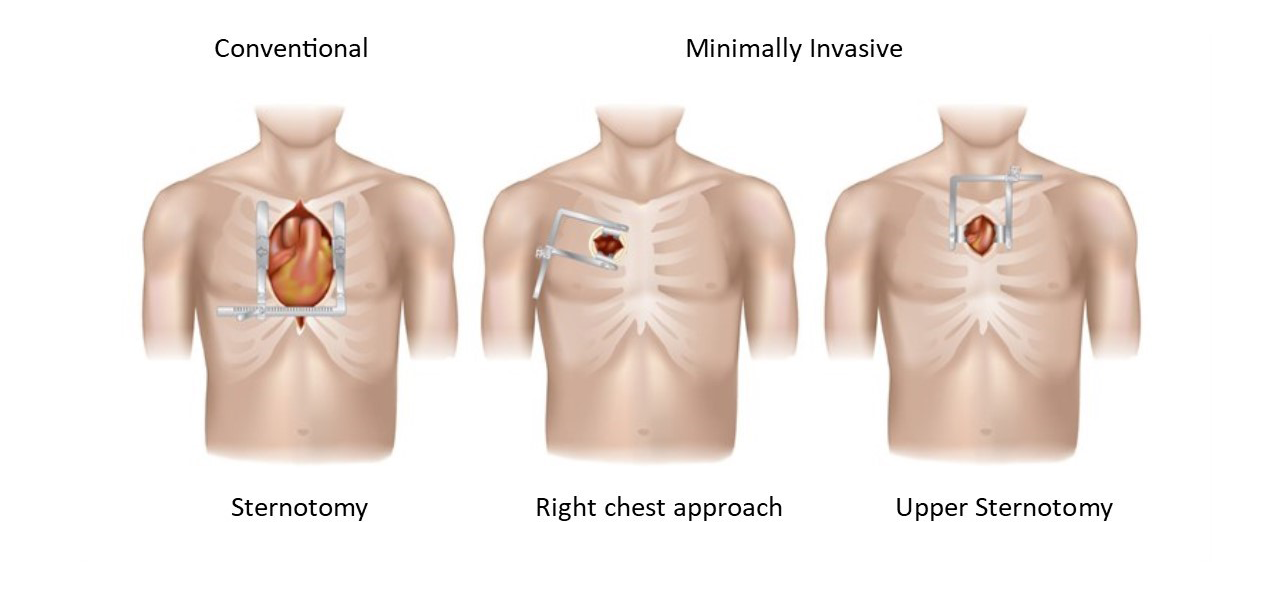Heart Valve Surgical Repair
Your heart has four valves, mitral valve, tricuspid valve, pulmonary valve and aortic valve. These valves open to let blood pass through, then close to prevent blood from flowing back in the wrong direction. Heart valves can develop two main problems:
- Stenosis, or narrowing. This means that a valve does not open wide enough to let sufficient blood pass through.
- Regurgitation, or leakage. The valve does not close completely, so blood leaks through in the wrong direction.
Mild valve problems can be treated with medication. More severe valve problems often require surgery to enable the valve to work correctly.
How is it done?
There are many different types of valve repair surgery. Three of the most common are, traditional heart valve surgery, minimally invasive heart valve surgery and transcatheter valve therapies.
Traditional valve repair: This is an open heart surgery that requires your surgeon to open your breast bone (this is called a full sternotomy) to have direct access to the valves of your heart in order to make the required repairs. You will be placed on the heart lung machine in order to perform the procedure.

Minimally invasive valve repair: Uses smaller incisions to repair your heart's valves. The benefits of minimally invasive surgery include eliminating the need for sternotomy. A smaller incision is made either between the ribs of the upper left side of the chest or the upper portion of the sternum, which means less blood loss and a quicker recovery. Not everyone is a candidate for minimally invasive valve surgery. Your surgeon will determine if this type of surgery is right for you.

Transcatheter Aortic Valve Replacement (TAVR): The TAVR procedure allows physicians to replace a diseased aortic valve without open-heart surgery. A catheter is inserted through a large artery in the leg and threaded up to the aortic valve. A valve on the end of the catheter is then inserted into the opening of the valve.
Watch this video for more information
MitraClip: A catheter approach to repairing the mitral valve. A catheter is placed into a vein in the leg and threaded up to the mitral valve and a clip is placed on the mitral leaflet for repair.
Explore less invasive options for mitral valve issues.
Know the risks
Your doctor will discuss the risks of these procedures with you. Some of the risks include the following:
- Bleeding
- Heart rhythm problems
- Less common complications are:
- Heart attack, if a blood clot breaks loose soon after surgery
- Infection of the chest wound
- Kidney failure
- Stroke
- Reaction to the anesthesia
Technology and expertise at Lee Health
Shipley provides the most advanced valve repair surgeries and treatments using a multidisciplinary approach.
Our surgeons have extensive experience with minimally invasive procedures. Shipley’s program was the first in the state of Florida and second in the nation to preform TAVR immediately following FDA approval in 2011. Since that time we have performed over 2,000 TAVR procedures.
We have found that a minimally invasive approach can be effective for most cardiac surgery patients, even with challenging repairs. Shipley’s surgeons routinely use minimally invasive procedures for valve surgery.
Related to Heart Valve Repair
-
Shipley Cardiothoracic Center
Our cutting-edge facility and award-winning surgeons manage heart and lung diseases using the latest technology, taking advantage of research trends and making a personal connection with patients.
